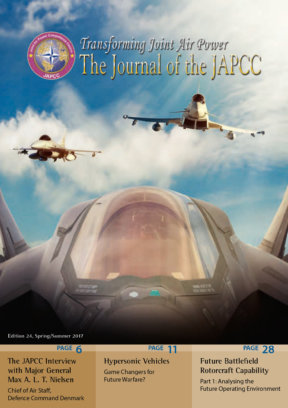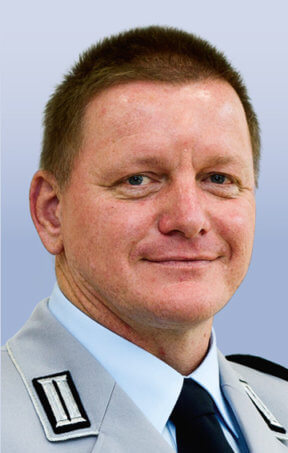The monopoly of violence is one element that confirms the statehood of modern nations. By agreeing to allocate ways and means to exert and control violence, the society also defines red lines: The legitimate rules for the use of force, establishing norms and values for a fair fight.
Introduction
Russia’s recent behaviour and actions are often referred to as ‘hybrid warfare’. Although this concept continues to enjoy widespread popularity in both scholarly and policy circles, its utility as an analytical tool is heavily contested.1 Many sceptics argue the capabilities and methods used by Russia or other contemporary actors are not new or unique.2 However, changing dynamics within the international environment make this type of warfare look different. It looks as if old tools have been reinvented and used in innovative ways to bring to bear a new kind of pressure on an opponent, to achieve faster and sometimes more vicious political goals. Hybrid warfare is simply the increased level of blending between conventional and unconventional forms of conflict, which are characterized by agility and adaptation – for instance through technological means – in an attempt to achieve decisive effects on the physical and psychological battlefield.3
Russia’s hybrid methods have been an effective and sometimes surprising mix of military and non-military, conventional, and irregular components that can include all kinds of instruments such as cyber and information operations. None of the single components are new; it is the combination and orchestration of different actions that achieves a surprising effect and creates ambiguity. This makes an adequate reaction extremely difficult, especially for multinational organizations that operate on the principle of consensus.4
A primary function of the Alliance’s strategic communications is to express the consistency among rules, norms and values of our society with military goals and effects. This includes especially respecting the provisions of the International Law of Armed Conflict (LOAC) as well as the Universal Declaration of Human Rights. So it can be expected that opponents will attempt to discredit the exertion of violence as contrary to the rules of our nations. If an adversary actor cannot achieve conventional superiority in a conflict, they have the option of challenging our adherence to the rules and raising moral/ethical questions. Hybrid tactics, including spread of disinformation, may allow the opponent to create ambiguity of intent and attribution, and therefore discredit any political or military NATO response.
What if the enemy takes advantage of increasing autonomy and automation to use his weapon systems against friendly targets in a non-attributable manner? What if he even manages to hack automated friendly weapon systems to employ them against friendly or other non-intended targets and blame us? Non-attribution and disinformation aspects of hybrid warfare have the potential to bring NATO much closer to the red lines, with particular potential impact on NATO’s most significant asymmetric advantage – air power.
Hybrid Warfare and the Red Lines
While combining violent and nonviolent means to achieve goals is an age-old phenomenon, the flexible and swift coordination of these various means with current targeting methods can be considered novel features of modern hybrid warfare. The key targets for hybrid operations are vulnerabilities or weaknesses in any vital part of the target country’s society.5 These vulnerabilities could include the red lines set by this society’s norms and values. The red line concept applied to a nation in conflict defines the behavioural boundaries of its members acting as a whole. It may also refer to a point of no return that would generate a different strategic context, or a new, undesired military, economic, or diplomatic framework.
In hybrid war it is nearly impossible to say when the actual fighting or organized violence that is war in its classic form begins. One of the core ideas of hybrid warfare is that it intentionally blurs the distinctions between the neatly separated Western categories of war and peace, and civilian and military operations. This blurring is achieved by utilizing a wide variety of means, both violent and nonviolent, military and civilian, in a carefully planned way without unnecessarily breaching the threshold of war, even if the level of escalation varies.6
While in a grey area of no uniforms, no observable presence and no rules in all domains and spectrums, each hybrid action will more or less adhere to a conventional military commander’s intent, but with a certain degree of independence. In other words, the hybrid forces maintain a portion of their activities beyond the conflict’s red lines while targeting a country or an alliance for the benefit of a visible, politically recognized third party that pretends not to be crossing the red lines. For this reason, the effect of hybrid operations is double: First, they create uncertainty due to the difficulties of identifying, labelling, and attributing these hybrid actions. Second, they raise the possibility of generating friction inside the targeted society, which might even prevent it from taking decisive action against the hybrid threat, including with its conventional warfare potential.
NATO Air Power and the Red Lines
Air Power has long been NATO’s (and more specifically the United States’) asymmetric advantage7. No opponent has matched these capabilities, and anyone tempted to challenge NATO easily identified Air Power as a target for hybrid activities, such as cyber and electronic warfare as well as disinformation. These subjects have been analysed in the three most recent JAPCC conferences. First, in 2014, a Future Vector was defined to sustain that asymmetric advantage. In 2015, the conference addressed a shortfall in explaining Air Power’s role from the Strategic Communications perspective. Finally, in 2016, participants examined a degraded environment, including various factors affecting Air Power.
Air Power is a formidable capability but restrained to operate within the moral and ethical red lines tied to the expectations of civilized societies. Other actors exploit this fact through the use of disinformation. For instance, they might try to characterize NATO Air Power as ruthless aggression, as seen in Afghanistan. Although the International Security Assistance Force (ISAF) operated under careful rules of engagement, a constant Taliban disinformation campaign successfully leveraged popular anti-ISAF sentiments by falsely blaming an exaggerated number of civilian casualties on ISAF air strikes. This led to command decisions that restricted ISAF air and ground firepower even further, shifting the red lines for their employment to the right while accepting higher risk for their own troops.8 In other words, the Alliance constrained itself to assume higher degrees of risk to avoid the perception of surpassing its legal and moral thresholds. Other forms of disinformation might be used by an adversary hybrid actor to distract from its own aggressions and the collateral damage inflicted, especially if clear attribution can be prevented.
The evolution of advanced conventional warfare capabilities leads to systems with ever longer ranges and higher velocity. However, until present, humans in the loop have dealt with war machinery to maintain it within the envelope defined by the LOAC. In most cases, humans are co-located with platforms, triggers, and communication systems to conduct operations. The reins of command guarantee that Air Power remains both controlled and effective through distribution of responsibilities and decision authority. But a new generation of ‘fire and forget’ weapons, based on increasing autonomy and automation through artificial intelligence, has arrived. Within NATO doctrine, the ‘fire and forget’ concept still includes several pre-conditions for weapons release, among others: a clear avenue of fire, a sorted target, and a clearance to engage. However, a non-attributable, hybrid warrior can easily choose to live outside those boundaries and use the systems without such preconditions.
Unleashed Machines
Science fiction frequently depicts autonomous machines eager to spark a trend of destruction by themselves. Highly lethal weapon systems incorporating artificial intelligence mechanisms for platform orchestration may be designed to operate independently of a kill chain. The Find, Fix, Track, Target, and Engage process would happen away from human restraints, and this self-healing and self-learning set of machines (the dynamic version of the land or sea mines) may populate the third dimension of any operational area.
This concept goes beyond employing Remotely Piloted Aircraft (RPA), where the operator and the weapon have a legal team attached to validate the engagement with lethal payloads after labelling the target. The cyber-orchestration of these elements and their dynamic synchronization through different link features may generate a formidable threat that does not need the physical presence of the human enemy. Unmanned vehicles may be operated to fly and deliver any type of weapon even on an automatic, pre-programmed vector enjoying covertness, flexibility, range, and air defence gaps.
The basic political, legal, and technological challenges NATO has with regard to Air Policing against unmanned aircraft were described in JAPCC Journal Edition 23.9 It is not difficult to imagine the strong effects that cyber orchestration of an autonomous, unidentified swarm of aggressive adversary aerial vehicles would create in the target society. In addition to scaring civilians, it might paralyze political or military decision makers, who will have a hard time deciding on counter measures in accordance with established red lines, rules and values. If the origin of the threat and the threat itself are impossible to label, and the machines apply their patterns of logic to deliver power outside the red lines of accepted rules and values, then the population will demand information and protection from this faceless enemy.
Conclusion
Current generations in most countries have not lived through a war. Most modern nations abide by the rules of violence exertion and control. But the threat of hybrid war that exceeds those boundaries cannot be ignored, especially when disinformation is expected to sustain the profile of future conflict through global media and social networks.
These conflicts will not feature uniforms and flags, and the cyber domain will make it possible to force a new perception. The marriage between hybrid warfare and disinformation and its impact on our critical advantage, Air Power, may generate new social environments that will demand a more effective defence: A stronger defence not only against the visible opponent, but also against the warriors that cannot be seen, against the uncertainty they generate in the population, and in the future, against unleashed machines flying solo.













